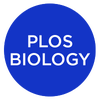


PLOS Biology is the PLOS flagship journal in the life sciences. We are a selective, open-access, not-for-profit, peer-reviewed journal aiming to help advance discovery, depressurize the publication process and drive open science
This profile is from a federated server and may be incomplete. Browse more on the original instance.